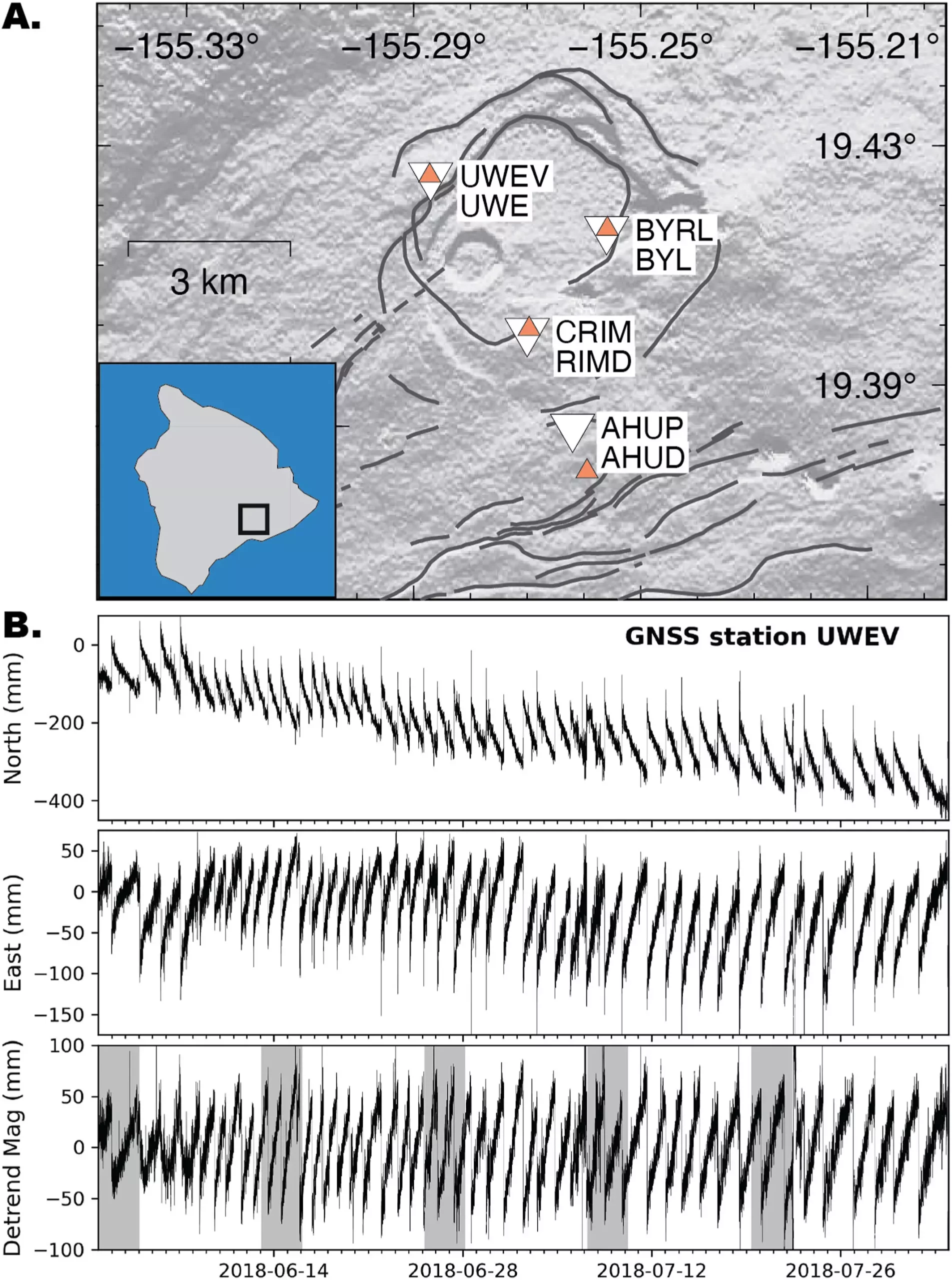In a groundbreaking study conducted by a team at Los Alamos National Laboratory, the power of machine learning was harnessed to identify hidden signals that foreshadow earthquakes. This research, which focused on the Kīlauea volcano in Hawaii, marks a significant advancement in the field of seismology. By analyzing seismic data collected over a specific time period, researchers were able to uncover patterns that indicate when a major slip, and subsequently an earthquake, is imminent.
The team, led by seismologist Christopher Johnson, delved deep into the characteristics of stick-slip faults, which have the potential to cause widespread destruction. By isolating 30-second windows of seismic data and applying a sophisticated model, the researchers identified a unique signal that mirrored the loading cycle of each seismic event. This discovery sheds light on the underlying physics of earthquake faults, suggesting that similar methods could be employed to assess earthquake risks worldwide.
Traditionally, continuous acoustic or seismic emissions have been viewed as mere noise in seismic data. However, the researchers at Los Alamos challenged this perception by demonstrating that these signals contain valuable information about fault properties such as displacement, friction, and thickness. By examining the evolution of these continuous signals, scientists were able to pinpoint the current state of the fault and anticipate when it is likely to slip, leading to a seismic event.
The study at the Kīlauea volcano marked the first successful application of machine learning to seismogenic faults, where earthquakes originate. By analyzing data from a series of stick-slip events, the researchers accurately predicted ground displacement and the timing of future fault failures. This innovative approach opens up new possibilities for enhancing earthquake forecasting and mitigating potential risks.
While the research conducted by the team at Los Alamos represents a significant leap forward in earthquake prediction, challenges still remain. Stick-slip faults, such as those observed at the Kīlauea volcano, pose unique difficulties due to their rapid and unpredictable nature. Despite this, the integration of machine learning techniques offers a promising avenue for improving our understanding of these complex geological phenomena.
The utilization of machine learning to detect pre-earthquake signals represents a paradigm shift in seismology. By unraveling the mysteries of stick-slip faults and reinterpreting seismic data, researchers are paving the way for more accurate and timely earthquake predictions. While the road ahead may be fraught with challenges, the potential benefits of such innovative research cannot be understated.


Leave a Reply